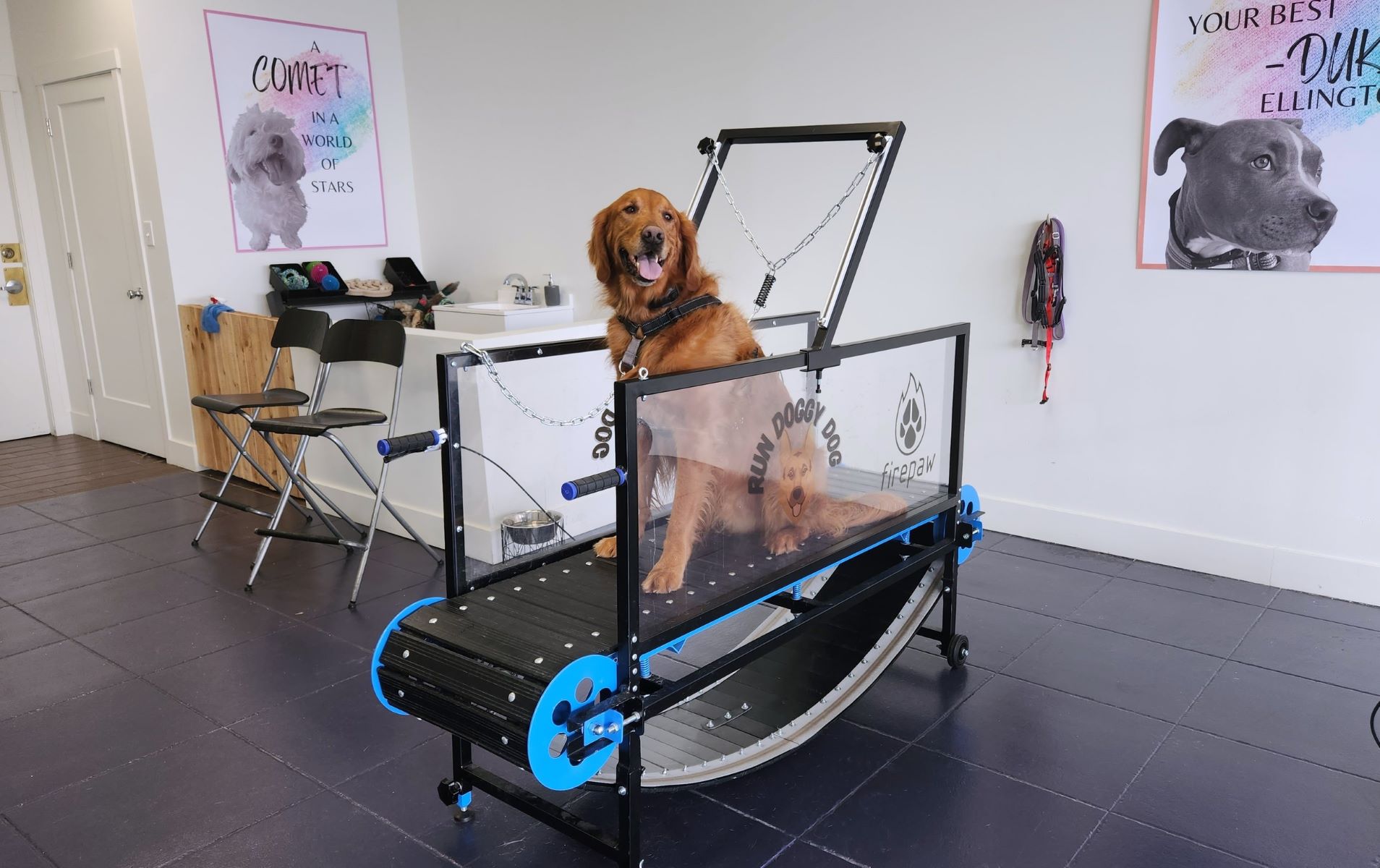Home>Misc>Featured>How To Add Kettle Bell Interval Training Into Your Routine


Featured
How To Add Kettle Bell Interval Training Into Your Routine
Modified: August 21, 2023
Discover how to incorporate featured kettlebell interval training into your fitness routine for maximum results. Boost your strength and endurance with these effective workouts.
Introduction
Welcome to the world of kettlebell interval training! If you’re looking for a dynamic and effective way to spice up your fitness routine, incorporating kettlebell interval training might be just what you need. This form of exercise combines the benefits of strength training, cardiovascular endurance, and calorie burning into one powerhouse workout.
Kettlebells, with their unique shape and handle, provide a versatile tool for full-body workouts. The interval training aspect adds an extra challenge by alternating between periods of intense effort and brief recovery. This combination not only increases your overall fitness level but also helps you burn fat and build lean muscle mass in a short amount of time.
Whether you’re a beginner or an experienced fitness enthusiast, kettlebell interval training can be tailored to suit your individual needs and goals. It’s a great way to add variety to your workouts, break through plateaus, and keep your body guessing. Plus, it can be done in the comfort of your own home or at the gym.
In this article, we’ll explore the benefits of kettlebell interval training, how to get started, and provide you with a sample routine to incorporate into your fitness regimen. So, grab your kettlebell and get ready to level up your workout!
Benefits of Kettlebell Interval Training
Kettlebell interval training offers a range of benefits, making it a popular choice for fitness enthusiasts of all levels. Here are some key advantages:
- Efficient Workout: One of the biggest benefits of kettlebell interval training is its time efficiency. By combining strength and cardio exercises into one routine, you can get a full-body workout in a shorter amount of time compared to traditional exercise methods.
- Increased Calorie Burn: The high-intensity intervals in kettlebell training help elevate your heart rate and boost your metabolism, leading to increased calorie burn during and after your workout. This can support weight loss and improve overall body composition.
- Improved Strength and Muscle Tone: Kettlebell exercises engage multiple muscle groups simultaneously, providing a challenging resistance workout. Regular kettlebell interval training can lead to improved strength, muscle tone, and functional fitness.
- Enhanced Cardiovascular Endurance: The interval nature of kettlebell training helps improve cardiovascular fitness, as it pushes your heart rate up during the intense intervals and allows it to recover during rest periods. Over time, this can lead to improved endurance and stamina.
- Core Stability and Balance: Many kettlebell exercises require stability and coordination, which engages your core muscles and improves balance. This not only helps with overall physical performance but also reduces the risk of injury in daily activities.
- Variety and Fun: Kettlebell interval training offers a wide range of exercises and workout variations, allowing you to constantly challenge yourself and prevent boredom. The dynamic nature of the movements makes it a fun and engaging way to stay motivated on your fitness journey.
With all these benefits, it’s no wonder that kettlebell interval training has gained popularity among fitness enthusiasts looking for an effective and efficient workout. Now that you know what it has to offer, let’s dive into how to get started with kettlebell interval training.
Getting Started with Kettlebell Interval Training
Before diving into kettlebell interval training, it’s important to start with a strong foundation and gradually increase the intensity and duration of your workouts. Here are some steps to help you get started:
- Evaluate Your Fitness Level: Assess your current fitness level and any specific goals you have in mind. This will help you determine the appropriate intensity and duration for your kettlebell interval training workouts.
- Learn Proper Technique and Form: Kettlebell exercises involve complex movements, so it’s crucial to learn proper technique and form to avoid injury. Consider working with a certified kettlebell instructor or watching instructional videos to master the correct execution of each exercise.
- Start with the Basics: If you’re new to kettlebell training, begin with basic exercises that focus on building strength and stability. Examples include the kettlebell swing, goblet squat, and the Turkish get-up. Mastering the fundamentals will set you up for success as you progress to more advanced movements.
- Create a Workout Plan: Plan your kettlebell interval training sessions in advance. Decide on the number of intervals, exercise combinations, and work-to-rest ratios that align with your fitness goals. For beginners, starting with shorter intervals and longer rest periods is recommended.
- Warm Up and Cool Down: Never skip your warm-up and cool-down routines. Incorporate dynamic stretches and mobility exercises to warm up your muscles before each session and static stretches to cool down and prevent muscle soreness.
- Gradually Increase Intensity: As your fitness level improves, gradually increase the intensity of your kettlebell interval training workouts. You can do this by adding more repetitions, increasing the weight of the kettlebell, or shortening rest periods between intervals.
- Listen to Your Body: Pay attention to how your body feels during and after your workouts. If you experience pain or discomfort, adjust your technique, reduce the weight, or consult a fitness professional to ensure you’re performing the exercises correctly.
Remember, consistency is key. Aim to incorporate kettlebell interval training into your routine 2-3 times per week, allowing for rest days in between. Now that you’re equipped with the basics, let’s move on to selecting the right kettlebell for your workouts.
Choosing the Right Kettlebell
Selecting the right kettlebell is essential to ensure a safe and effective workout. Here are some factors to consider when choosing the appropriate kettlebell weight:
- Experience Level: Your experience level with kettlebell training will play a significant role in determining the appropriate weight. Beginners should start with a lighter kettlebell to focus on form and technique, while more experienced individuals can opt for a heavier weight to challenge their strength and endurance.
- Your Fitness Goals: Consider your fitness goals when selecting a kettlebell weight. If your primary goal is strength training, you may choose a heavier kettlebell. If you’re focusing on endurance or fat loss, a lighter weight with higher repetitions may be more suitable.
- Strength and Fitness Level: Assess your overall strength and fitness level when choosing the kettlebell weight. It should feel challenging but manageable. Start with a weight that allows you to maintain proper form throughout the exercises without compromising technique.
- Exercise Variation: Different exercises require different kettlebell weights. For example, a kettlebell swing generally requires a heavier weight than a kettlebell snatch. Consider the range of exercises you plan to incorporate into your workouts and choose a weight that accommodates the most challenging exercise in your routine.
- Comfort and Grip: Ensure that the kettlebell you choose has a comfortable and secure grip. The handle should be wide enough for both hands to fit comfortably, allowing for proper technique and reduced risk of injuries.
- Consider Consulting an Expert: If you’re unsure about the appropriate kettlebell weight for your fitness level or goals, consider seeking guidance from a certified kettlebell instructor or a fitness professional. They can assess your individual needs and provide personalized recommendations.
Remember, it’s always better to start with a lighter kettlebell and gradually progress to heavier weights as your strength and technique improve. A well-chosen kettlebell will not only maximize your training efforts but also minimize the risk of injuries. Now that you have the right kettlebell, let’s dive into the proper technique and form for kettlebell interval training.
Proper Technique and Form
Proper technique and form are crucial when it comes to kettlebell interval training. This ensures not only optimal results but also minimizes the risk of injury. Here are some key tips to keep in mind:
- Start with the Basics: Master the foundational kettlebell exercises before progressing to more advanced movements. Focus on perfecting your form and technique for exercises like the kettlebell swing, clean, press, snatch, squat, and Turkish get-up.
- Maintain a Neutral Spine: Throughout each exercise, maintain a neutral spine alignment by engaging your core muscles and avoiding excessive rounding or arching of your back. This helps distribute the load evenly and protects your spine.
- Engage Your Core and Glutes: Your core muscles and glutes play a crucial role in stabilizing your body during kettlebell exercises. Keep them engaged throughout the movements to improve stability and maximize the benefits of the workout.
- Breathe Properly: Focus on your breathing during kettlebell training. Inhale during the eccentric phase (when you lower the kettlebell or prepare for the movement) and exhale during the concentric phase (when you exert force or lift the kettlebell).
- Keep Your Shoulders Down and Back: Avoid hunching or shrugging your shoulders during exercises. Instead, keep them pulled down and back, maintaining proper alignment throughout the movements.
- Avoid Over-Gripping: While gripping the kettlebell firmly, avoid over-gripping as it can lead to unnecessary tension in your forearms and wrists. Find a comfortable grip that allows for controlled movement without compromising your form.
- Control the Movement: Maintain control of the kettlebell throughout each exercise. Avoid using momentum or swinging the weight excessively, as this can strain your muscles and increase the risk of injury.
- Start with Lighter Weights: Begin with a lighter kettlebell weight when learning new exercises or refining your form. This allows you to focus on your technique without being overwhelmed by the load.
Remember, it’s always a good idea to practice in front of a mirror or seek feedback from a qualified instructor to ensure you’re performing the exercises with proper technique. Now that you understand the importance of proper form, let’s move on to warming up exercises to prepare your body for kettlebell interval training.
Warm-Up Exercises
Before diving into your kettlebell interval training session, it’s essential to warm up your body to prevent injuries and prepare your muscles for the upcoming workout. Here are some effective warm-up exercises to incorporate into your routine:
- Joint Mobility Exercises: Start your warm-up with some gentle joint mobility exercises. Move your joints through their full range of motion, including the neck, shoulders, wrists, hips, knees, and ankles. This helps lubricate the joints and increase blood flow to the surrounding muscles.
- Dynamic Stretches: Perform dynamic stretches that mimic the movements you’ll be doing during your kettlebell interval training. Examples include walking lunges, arm circles, leg swings, and hip openers. Focus on opening up your hips, activating your core, and loosening up your shoulder joints.
- Cardiovascular Warm-Up: Increase your heart rate and body temperature with a brief cardiovascular warm-up. This can be done through activities such as brisk walking, jogging in place, jumping jacks, or skipping rope. Aim to elevate your heart rate without exhausting yourself.
- Specific Muscle Activation: Activate the specific muscle groups that will be engaged during your kettlebell exercises. Perform bodyweight exercises like squats, lunges, push-ups, and planks to activate your lower body, upper body, and core muscles.
- Kettlebell Swings: Start your warm-up set with a few light kettlebell swings. This helps familiarize your body with the movement pattern and prepares the posterior chain, including your glutes, hamstrings, and back muscles, for the upcoming workout.
- Practice Proper Breathing: Use your warm-up time to focus on your breathing technique. Practice diaphragmatic breathing, inhaling deeply through your nose and exhaling fully through your mouth. This helps oxygenate your muscles and improve focus.
- Stretching: Conclude your warm-up routine with some static stretching. Focus on areas that feel tight or tense, such as your hip flexors, quadriceps, hamstrings, chest, and shoulders. Hold each stretch for 20-30 seconds, avoiding any bouncing or jerking movements.
Your warm-up should last around 10-15 minutes, gradually increasing your heart rate and warming up your muscles. Remember to listen to your body and modify any exercises or stretches to suit your individual needs. Now that you’re properly warmed up, let’s dive into a sample kettlebell interval training routine to get you started.
Sample Kettlebell Interval Training Routine
Now that you’re familiar with the benefits of kettlebell interval training and have learned the necessary techniques, it’s time to put it all into action with a sample routine. Remember to modify the exercises and work-to-rest ratios based on your fitness level and goals. Here’s a sample kettlebell interval training routine to get you started:
Warm-Up: Begin with 5-10 minutes of joint mobility exercises, dynamic stretches, a cardiovascular warm-up, and specific muscle activation exercises as mentioned earlier.
Interval Set 1:
- Exercise 1: Perform kettlebell swings for 40 seconds at a high intensity.
- Rest: Rest for 20 seconds.
- Exercise 2: Perform kettlebell goblet squats for 40 seconds at a high intensity.
- Rest: Rest for 20 seconds.
- Repeat: Repeat this circuit for a total of 3 sets.
Interval Set 2:
- Exercise 1: Perform kettlebell cleans for 40 seconds at a high intensity.
- Rest: Rest for 20 seconds.
- Exercise 2: Perform kettlebell overhead presses for 40 seconds at a high intensity.
- Rest: Rest for 20 seconds.
- Repeat: Repeat this circuit for a total of 3 sets.
Interval Set 3:
- Exercise 1: Perform kettlebell snatches for 40 seconds at a high intensity.
- Rest: Rest for 20 seconds.
- Exercise 2: Perform kettlebell lunges (alternating legs) for 40 seconds at a high intensity.
- Rest: Rest for 20 seconds.
- Repeat: Repeat this circuit for a total of 3 sets.
Cool Down: Conclude your kettlebell interval training with a 5-10 minute cool down, including stretching exercises for various muscle groups used during the workout.
Remember to start with lighter weights and gradually increase as you progress. Keep proper form and technique throughout the routine, ensuring that you can maintain control and stability with each exercise. Feel free to modify the intervals, rest periods, and exercises based on your fitness level and preferences. Listen to your body and adjust as needed.
By incorporating this sample kettlebell interval training routine into your fitness regimen, you’ll challenge your strength, improve your cardiovascular endurance, and enhance your overall fitness level.
Tips for Maximizing Your Workout
To get the most out of your kettlebell interval training sessions, consider incorporating the following tips:
- Focus on Proper Technique: Maintain proper form and technique for each exercise. This ensures that you’re targeting the intended muscle groups and reducing the risk of injury.
- Gradually Increase Intensity: As your strength and endurance improve, progressively increase the intensity of your kettlebell interval training. This can be done by adding more reps, increasing the weight, or shortening rest periods between intervals.
- Monitor Your Heart Rate: Keep an eye on your heart rate during the intense intervals to ensure you’re working at an appropriate intensity. Aim for 70-85% of your maximum heart rate to challenge your cardiovascular system.
- Stay Hydrated: Drink water before, during, and after your workouts to stay properly hydrated. Dehydration can negatively impact your performance and recovery.
- Engage Your Core: Focus on engaging your core muscles throughout each exercise. This provides stability and enhances the effectiveness of the movements.
- Vary Your Workouts: Incorporate a variety of kettlebell exercises and workout formats to prevent boredom and keep your body challenged. Try different combinations of exercises, play with rep schemes, and explore different interval lengths.
- Prioritize Recovery: Allow your body sufficient time to rest and recover between kettlebell interval training sessions. This promotes muscle repair and growth, preventing overtraining and reducing the risk of injury.
- Listen to Your Body: Pay attention to your body’s signals. If something doesn’t feel right, modify the exercise, reduce the weight, or take a break. Push yourself, but also respect your limits.
- Track Your Progress: Keep a workout journal or use a fitness app to track your progress. This allows you to monitor your improvements, set goals, and stay motivated.
- Include Rest Days: Rest days are just as important as training days. Schedule regular rest days to allow your body to recover, reduce the risk of overuse injuries, and maintain long-term progress.
By applying these tips, you’ll enhance the effectiveness of your kettlebell interval training and make the most of your workouts. Remember to consult with a healthcare professional or fitness expert before starting any new exercise program, especially if you have any pre-existing medical conditions. Now, armed with these tips, you’re ready to take your kettlebell interval training to the next level!
Common Mistakes to Avoid
While kettlebell interval training can be highly beneficial, there are some common mistakes that people make. By recognizing and avoiding these errors, you can ensure that you’re getting the most out of your workouts and minimizing the risk of injury. Here are some common mistakes to avoid:
- Using Incorrect Form: Improper form is one of the most significant mistakes individuals make during kettlebell interval training. It’s essential to learn the correct technique for each exercise and focus on maintaining proper form throughout the workout.
- Using Too Heavy of a Kettlebell: It’s tempting to want to lift the heaviest kettlebell possible, but using a weight that’s too heavy can compromise your form and increase the risk of injury. Choose a weight that allows you to perform the exercises with proper technique and control.
- Skipping the Warm-Up: Neglecting to warm up properly before your kettlebell interval training can lead to muscle strains, pulls, or other injuries. Always take the time to warm up your muscles and prepare your body for the workout.
- Relying Too Much on Momentum: Generating momentum to swing the kettlebell instead of using controlled movements can be a mistake. This not only reduces the effectiveness of the exercise but also increases the risk of injury. Focus on controlling the movements and engaging the appropriate muscles for each exercise.
- Not Listening to Your Body: Pushing yourself too hard or ignoring pain signals from your body is a common mistake. Remember to listen to your body and adjust the intensity or modify the exercises as needed. Pushing through pain can lead to further injury.
- Overtraining: Excessively training with kettlebells without allowing your body enough time to recover is a mistake that many people make. Rest and recovery are essential for muscle growth and injury prevention. Include rest days in your training schedule.
- Neglecting Proper Breathing: Breathing improperly during kettlebell exercises can reduce the effectiveness of your workout. Be mindful of your breath, inhaling during the eccentric phase and exhaling during the concentric phase of each movement to ensure proper oxygenation and stability.
- Failing to Progress Gradually: Progressing too quickly by taking on advanced exercises or using heavier weights before mastering the fundamentals is a common mistake. Gradually increase the intensity and difficulty of your workouts to avoid overwhelming your body and risking injury.
- Not Seeking Professional Guidance: Attempting kettlebell interval training without proper instruction or guidance can lead to poor technique and potential injuries. Consider working with a certified kettlebell instructor or fitness professional to ensure you’re performing the exercises correctly.
- Neglecting Mobility and Flexibility: Failing to incorporate mobility and flexibility exercises into your routine can limit your range of motion and hinder your progress. Make sure to include stretching and mobility exercises to improve flexibility and prevent muscle imbalances.
By avoiding these common mistakes and focusing on proper form, technique, and adequate recovery, you’ll maximize the effectiveness of your kettlebell interval training while reducing the risk of injury. Keep these tips in mind as you continue with your fitness journey.
Recovery and Rest Days
Rest and recovery are essential components of any fitness program, including kettlebell interval training. Giving your body adequate time to rest and recover allows for muscle repair and growth, prevents overuse injuries, and helps maintain long-term progress. Here’s why recovery and rest days are important:
- Muscle Repair and Growth: When you train with kettlebells, you create small tears in your muscle fibers. It’s during the rest period that these muscles repair themselves, becoming stronger and more resilient. Without sufficient recovery, the muscles don’t have time to repair and may lead to overuse injuries.
- Prevention of Overtraining: Overtraining occurs when you push your body beyond its limits without allowing enough time for recovery. This can lead to decreased performance, fatigue, irritability, sleep disturbances, and an increased risk of injury. Incorporating rest days in your training schedule is vital to prevent overtraining.
- Reduction of Muscle Soreness: Engaging in intense kettlebell interval training can cause muscle soreness, also known as delayed onset muscle soreness (DOMS). Rest days give your muscles time to recover and reduce the soreness, allowing you to perform at your best during your next workout.
- Mental and Emotional Recovery: Physical exercise places demands not only on your body but also on your mind. Rest days give you a break from the mental and emotional stress that comes with intense workouts, allowing you to refresh and maintain motivation.
- Prevention of Plateaus: Constantly pushing your body without adequate rest can lead to performance plateaus. By incorporating rest days, you give your body time to adapt, recharge, and come back stronger, breaking through those plateaus and continuing to progress.
- Injury Prevention: Overuse injuries are more likely to occur when you don’t allow your body proper recovery time. Rest days give your muscles, tendons, and ligaments a chance to recover and reduces the risk of injury that can sideline your training.
- Aid in Sleep and Stress Management: Rest days not only allow physical recovery but also contribute to better sleep quality and stress management. A well-rested body has improved sleep patterns, which are crucial for overall health and performance.
- Active Recovery: On rest days, you can engage in light activities such as walking, stretching, or gentle yoga. This promotes blood flow to the muscles, aids in recovery, and helps alleviate muscle soreness.
- Individualize Your Rest Days: There is no one-size-fits-all approach to rest days. It’s essential to listen to your body and adjust your rest days based on your personal needs and the intensity of your kettlebell interval training. Some individuals may benefit from one or two complete rest days per week, while others may prefer active recovery or gentle exercises.
- Monitor your Progress: During your rest days, take time to reflect on your progress. Evaluate your goals, make adjustments to your training plan if necessary, and celebrate the milestones you’ve achieved so far.
Remember, rest and recovery are just as important as the workouts themselves. By incorporating regular rest days into your kettlebell interval training routine, you’ll optimize your performance, minimize the risk of injury, and achieve better long-term results.
Conclusion
Kettlebell interval training is a fantastic way to achieve a challenging and effective workout. By combining strength training and cardiovascular exercise, it offers numerous benefits, including increased calorie burn, improved strength and muscle tone, enhanced cardiovascular endurance, and enhanced core stability and balance.
Getting started with kettlebell interval training requires learning proper technique and form, selecting the appropriate kettlebell weight, and gradually increasing the intensity of your workouts. It’s crucial to warm up before each session and incorporate rest days for adequate recovery. Avoiding common mistakes such as using incorrect form or overtraining will help you mitigate the risk of injuries and maximize your results.
Remember, kettlebell interval training can be tailored to suit your fitness level and goals, making it accessible to beginners and challenging for advanced fitness enthusiasts. With consistency, dedication, and proper guidance, you can transform your body and improve your overall fitness.
So grab a kettlebell, lace up your shoes, and get ready to embark on an exciting journey of kettlebell interval training. Now that you have the knowledge and tools, it’s time to take action and elevate your fitness to new heights. Enjoy the process, stay motivated, and embrace the rewarding results that come with this dynamic and effective form of exercise. Happy training!









